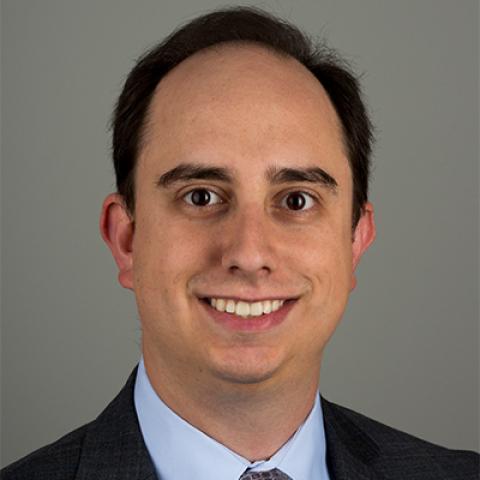
Adam Sowalsky, Ph.D.
Adam Sowalsky, Ph.D., is an Investigator in the Laboratory of Genitourinary Cancer Pathogenesis. He is seeking to tease apart the molecular mechanisms underlying prostate cancers that have a high likelihood of progressing and then identifying patients who might benefit from earlier therapy. He discusses what motivated him to pursue a career in cancer biology as well as what lies ahead for his research.
What are your current research interests?
My lab’s research focuses mostly on men who have recently been diagnosed with locally advanced prostate cancer, which means that the cancer is still within the prostate itself. However, these men have a very high risk of developing metastatic disease later on. There is also a limited opportunity for intervention for patients with locally advanced prostate cancer because their outcomes are so mixed. Although their cancer might be cured by surgery, for some patients it could also return. If it does, there are no sensitive methods for determining how far the cancer has spread. Usually, first-line treatments focus on the pelvis—local spread— but if the cancer has spread beyond the pelvis, it isn’t targetable and will inevitably progress to lethal disease. Therefore, it’s critical to treat locally advanced prostate cancers as early and aggressively as possible.
Men with locally advanced prostate cancer normally receive surgery or radiation, but they end up having a high risk of recurrence afterward. We are interested in how these men respond to newer treatments, namely androgen deprivation therapy plus a targeted androgen-receptor inhibitor given six months before surgery. These drugs are typically given much later in the course of prostate cancer treatments, usually when it becomes recurrent and metastatic. By administering them earlier, we might be able to prolong how long someone can live cancer-free. We also want to develop biomarkers of disease progression and understand why some men with locally advanced prostate cancer respond remarkably well to these treatments and why others do not.
How does your work fit into the big picture of cancer prevention, diagnosis and treatment?
Prostate cancer treatment can have numerous side effects. Ideally you want to treat these patients as little as possible to get the best response. If we find that some locally advanced prostate cancer patients respond really well to these targeted therapies, maybe they won’t need surgery in a future clinical trial. If a drug treatment eliminates the need for surgery in a patient, they will have fewer side effects.
In what are called neoadjuvant clinical trials, patients with locally advanced prostate cancer receive targeted therapies for six months and then undergo surgery. Some, who we call exceptional responders, are showing amazing responses to these drugs. Since they come through the NIH Clinical Center, we have the opportunity to acquire biopsies from them prior to treatment to study the properties of their cancers.
What are the future directions of your work?
Recently, the term liquid biopsy has become a buzzword in many types of disease settings, including cancer. In early prostate cancer, however, many liquid biopsy approaches have not demonstrated usefulness. Our group is trying to identify alternative blood-based markers that could be used for predicting recurrence in patients with locally advanced prostate cancer. Liquid biopsies can also provide an alternative approach to studying locally advanced prostate cancer in patients whose tumor cannot be biopsied by traditional means.
What sparked your interest in cancer research?
In college I studied DNA recombination in yeast. In theory, the knowledge gleaned from this work could be used for developing gene therapies, but it was very removed from actual patient care. After a couple of years, I wanted to perform research in an area that was more relevant to human disease, so when I was in graduate school, I only considered cancer laboratories. Given that there is still much to learn about cancer, researching it is an opportunity for a lifetime of learning. Importantly, whereas basic research can sometimes take 10 to 30 years to be translated to patients, translational research, which I perform, can affect patient care in five years or less.
What makes the CCR intramural environment a great place for science?
Firstly, CCR is a unique environment where we’re encouraged to take risks and use new technologies, allowing us to learn about cancer and biology through approaches that have rarely been tried before. As a result, CCR investigators are always making new discoveries. Secondly, when I approach a clinician with a scientific question, they’re interested in studying it as well because every clinician at CCR is a researcher. Since we each bring our own respective areas of expertise, what we can accomplish together is always greater than what we could have done alone.
What advice do you have for future generations of cancer researchers?
Don’t jump on what’s hot now. Instead, take a risk and join a research group where the projects aren’t yet ready for prime time but might be hot in the next five to 10 years. There’s no harm in joining a research group that’s working on something that’s popular now, but by the time a young researcher is ready to move on in their career and start a laboratory or clinical practice, or work at a pharmaceutical or biotech company, that trend might have passed. The idea is to always stay on the leading edge of exciting, but risky, research.